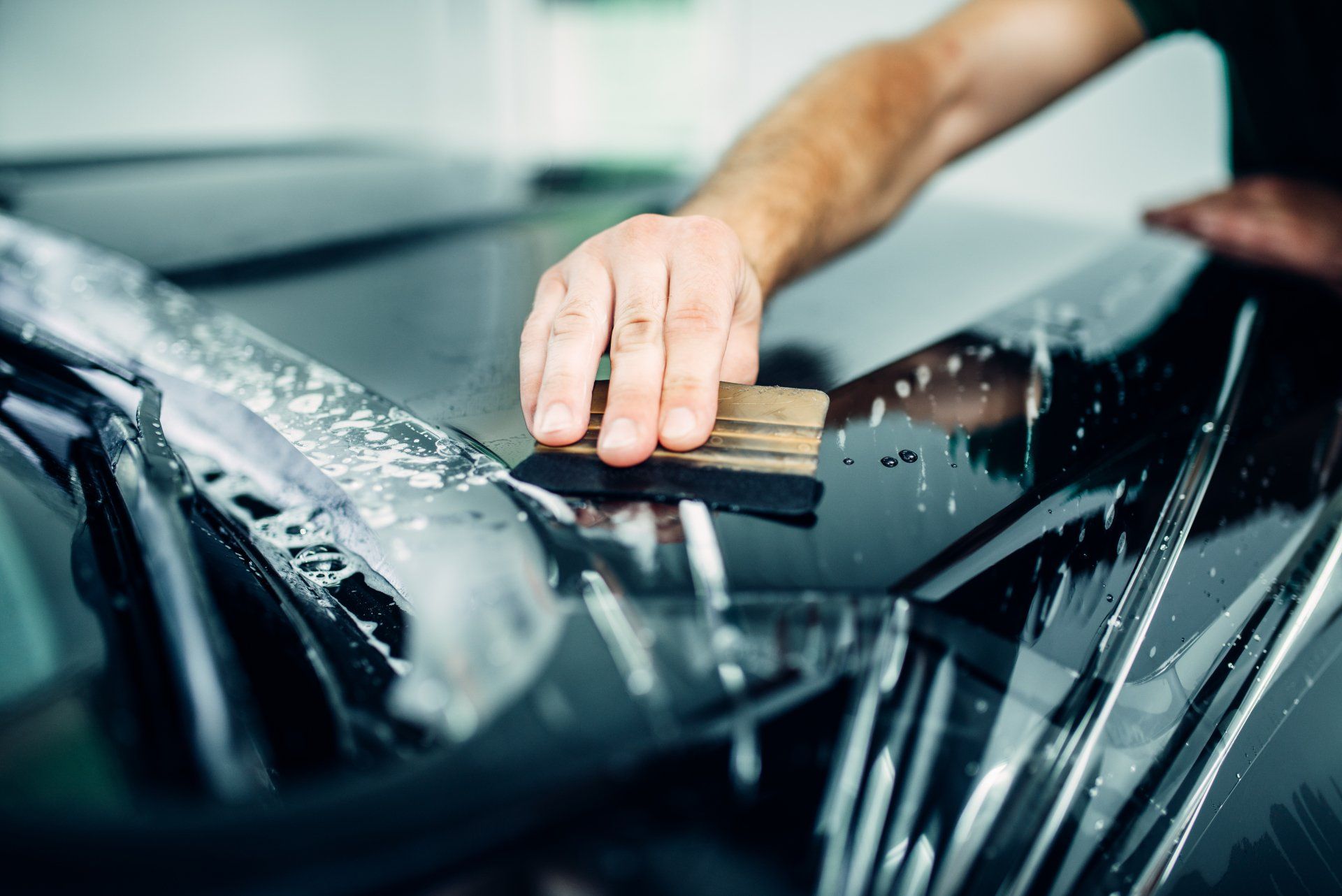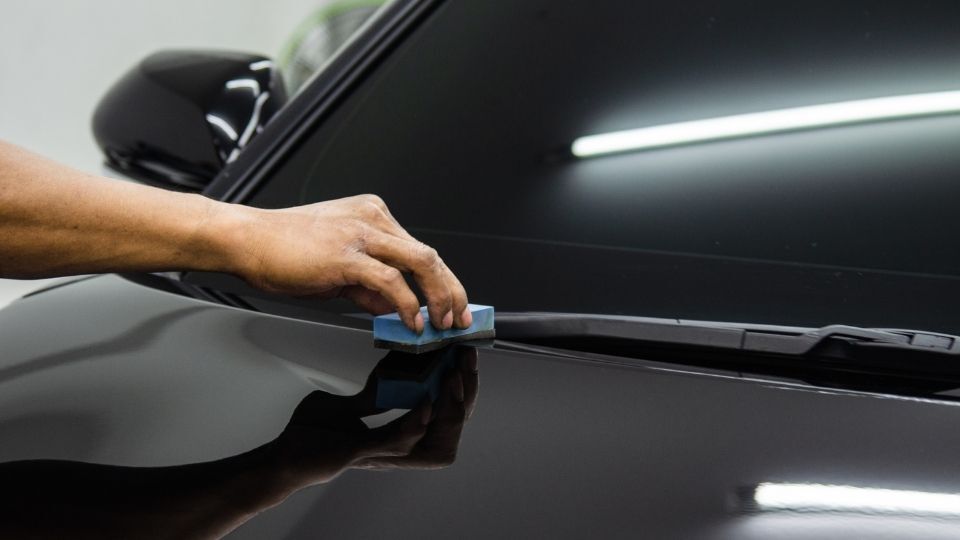Ceramic Coating for Cars: The Ultimate Solution for a Glossy Finish
Ceramic Coating for Cars: The Ultimate Solution for a Glossy Finish
Blog Article
Ceramic Finishing vs. Standard Wax: Which Provides Better Long-Term Protection?
The debate between ceramic layers and traditional wax for vehicle security has gathered significant attention amongst automotive lovers and specialists alike. While both satisfy of safeguarding paint, their distinctions in longevity, application, and lasting maintenance expenses might affect a customer's selection. Ceramic coatings boast remarkable durability and resistance to environmental elements, yet the intricacy of their application elevates concerns regarding accessibility and practicality. As we discover these contrasting choices, it ends up being necessary to think about not only the prompt benefits yet likewise the effects for automobile care over time.
Introduction of Ceramic Finishing
Ceramic covering has gotten significant appeal among auto enthusiasts and detailers alike as a result of its innovative protective top qualities. This innovative modern technology is made to produce a durable, hydrophobic shield over a vehicle's paint surface area, considerably boosting its resistance to environmental pollutants such as dirt, UV rays, and chemical spots. Unlike typical wax, which offers a short-lived layer of security, ceramic coatings bond at a molecular level with the paint, using long-lasting toughness-- frequently expanding past 2 years with appropriate upkeep.
The application process involves careful prep work of the car's surface area, consisting of cleansing and brightening to guarantee ideal bond. As soon as used, the finishing remedies to create a durable layer that not only includes deepness and gloss to the paint however additionally streamlines upkeep. With its hydrophobic homes, ceramic finish permits water and dust to slide off even more conveniently, lowering the regularity of washes and minimizing the threat of swirl marks.
Additionally, ceramic finishings are readily available in numerous formulas, enabling customers to choose products tailored to their particular needs and choices. Overall, ceramic covering represents a significant improvement in paint security technology, delivering premium performance compared to conventional alternatives.
Overview of Typical Wax
Commonly considered as a staple in auto treatment, wax functions as a prominent choice for those seeking a straightforward method to boost and secure their vehicle's paint - ceramic coating. Automotive wax usually makes up all-natural components, such as carnauba, or synthetic substances, created to create a safety layer on the surface of the paint. This layer not just boosts the automobile's gloss and shine but additionally supplies a barrier versus environmental impurities
The application of wax is typically user-friendly, making it accessible for both professionals and do it yourself enthusiasts. It can be applied by hand or maker, permitting versatility in the outlining process. As soon as used, wax requires a treating duration, after which it sets to develop a protective shell. Wax is likewise known for its capacity to push back water, promoting a beading impact that aids in the avoidance of water places and rust.
However, while wax works for boosting the aesthetic charm of a vehicle, it is crucial to keep in mind that the protection it provides might necessitate much more regular reapplication compared to alternate products, such as ceramic finishes. Overall, typical wax stays a preferred alternative for those focusing on convenience of use my explanation and prompt aesthetic improvement.
Sturdiness and Long Life Contrast
While both ceramic finishes and conventional wax deal safety benefits for auto paint, their sturdiness and long life vary significantly. Conventional wax, usually made from natural carnauba or synthetic polymers, typically offers a protective layer that lasts roughly three to six months. This relatively short life expectancy demands normal reapplication to preserve ideal security.
On the other hand, ceramic layers are crafted from sophisticated nanotechnology, creating a covalent bond with the paint surface area. This leads to a robust, hydrophobic layer that can endure for 2 to five years, depending on the item and ecological conditions. The remarkable longevity of ceramic layers is credited to their chemical structure, which provides improved resistance to scratches, UV rays, and oxidation.

Protection Versus Environmental Variables
Securing a car's paint from environmental elements is crucial for preserving its look and value with time. Automobiles are regularly exposed to a selection of aspects, consisting of UV rays, bird droppings, tree sap, acid rain, and road crud, all of which can endanger the integrity of the paintwork.
Ceramic finishings provide a durable defense against these ecological assailants. Unlike conventional wax, which can degrade rapidly under UV direct exposure, ceramic coatings develop a sturdy, hydrophobic layer that withstands the dangerous effects of sunlight and environmental toxins. This advanced innovation produces a chemical bond with the automobile's surface area, providing remarkable defense that lasts for several years, even in rough problems.
In contrast, ceramic coatings maintain their safety top qualities much longer, dramatically reducing the threat of paint damage and ensuring that the lorry keeps its aesthetic appeal. As a result, ceramic layers are significantly acknowledged as the superior choice for long-term defense against environmental variables.
Application and Upkeep Differences
The approaches of application and succeeding maintenance for ceramic coatings and traditional wax vary substantially, influencing the general customer experience and effectiveness of each item. Ceramic layers call for an even more intricate application process, generally including surface preparation that consists of cleaning, decontaminating, and brightening the automobile. As soon as the surface is ready, the ceramic covering is used in a controlled environment, frequently requiring professional experience to make certain correct curing and bonding to the paint.

While both products enhance car look, the longer-lasting find more information security supplied by ceramic coatings may validate their preliminary financial investment, regardless of the even more requiring application process. Alternatively, traditional wax stays a preferred selection for those looking for a less complex, albeit short-term, service.

Final Thought
Finally, ceramic coatings demonstrate significant advantages over traditional wax in regards to durability and environmental defense. With a life expectancy prolonging two to 5 years and premium resistance to UV rays, dirt, and chemical discolorations, ceramic coatings offer an extra effective service for long-term vehicle upkeep. The application procedure might require specialist expertise, the resulting price financial savings and decreased frequency of reapplication emphasize the value of ceramic layers for those looking site here for ideal vehicle defense.
The argument in between ceramic coverings and traditional wax for lorry defense has garnered considerable attention amongst vehicle enthusiasts and specialists alike. Unlike standard wax, which gives a short-term layer of security, ceramic coverings bond at a molecular degree with the paint, providing long-lasting longevity-- typically extending beyond 2 years with appropriate maintenance.
While both ceramic layers and conventional wax deal protective benefits for auto paint, their toughness and longevity differ dramatically. For auto lovers looking for long-term security, ceramic layers provide an engaging advantage over standard wax items.
In conclusion, ceramic finishes demonstrate considerable benefits over traditional wax in terms of sturdiness and ecological protection.
Report this page